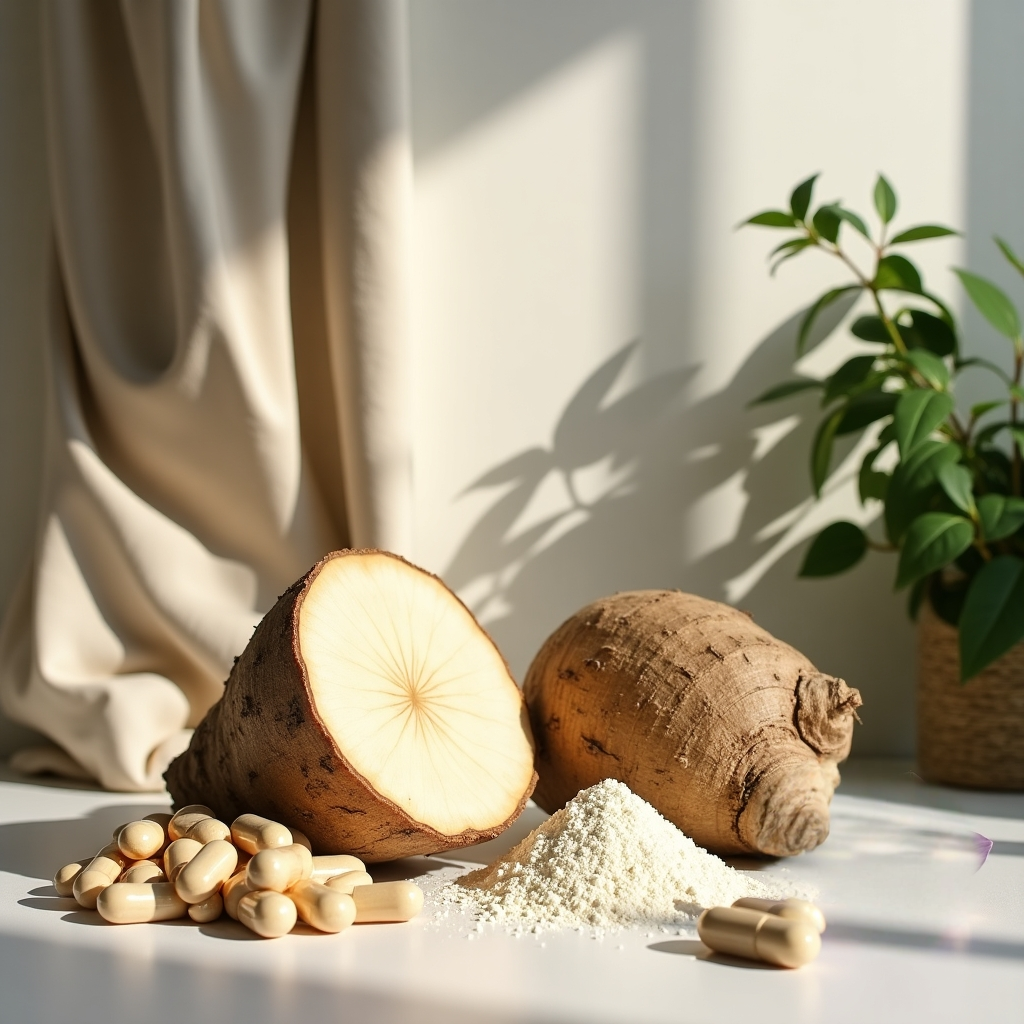
Pueraria mirifica (White Kwao Krua) is a leguminous plant native to northern Thailand and Myanmar, renowned for its rejuvenating and estrogenic properties. Traditionally used in Thai medicine for women’s health and vitality, modern studies have focused on its unique phytoestrogens, natural plant compounds that mimic the effects of estrogen in the body. Among these, miroestrol and deoxymiroestrol stand out as key active ingredients believed to play a significant role in breast growth and firmness.
Active Compounds in Pueraria mirifica
The major bioactive compounds in Pueraria mirifica include:
- Miroestrol and Deoxymiroestrol: Potent phytoestrogens that bind to estrogen receptors, especially ER-β, mimicking natural estrogen activity.
- Isoflavones (e.g., Genistein, Daidzein): Known to regulate hormone balance and enhance cellular activity in estrogen-sensitive tissues.
Research indicates that these compounds work together to stimulate mammary gland development and improve skin elasticity, factors often associated with youthful and fuller breasts.
Mechanism of Action: How It Works
Pueraria mirifica’s phytoestrogens interact with estrogen receptors in breast tissue. This interaction may help:
- Enhance fat deposition and glandular tissue growth, leading to fuller breast appearance.
- Improve collagen synthesis in skin and connective tissue, increasing firmness.
- Support hormonal balance during perimenopause or estrogen-deficient stages.
In a study by Cherdshewasart et al. (2008), P. mirifica extracts demonstrated strong estrogenic activity both in vitro and in vivo, comparable to natural estrogen in promoting mammary gland proliferation in animal models.
Furthermore, a 2017 study reported that miroestrol and deoxymiroestrol act as estrogen receptor agonists, suggesting their ability to influence breast tissue growth without the synthetic hormone side effects (Kang et al., 2017).
Safety and Considerations
When used in appropriate doses, Pueraria mirifica is generally well-tolerated. However, excessive intake or unsupervised use could lead to hormonal imbalance or side effects such as breast tenderness or menstrual irregularities.
It’s recommended to use standardized extracts from reputable sources and avoid long-term continuous use without professional guidance.
Conclusion
Pueraria mirifica’s reputation for natural breast enhancement is supported by emerging scientific evidence. Its unique phytoestrogens, especially miroestrol and deoxymiroestrol, provide a plausible mechanism for stimulating breast tissue development and improving firmness. While more human studies are needed, the herb remains a fascinating botanical alternative for those seeking gentle, plant-based support for women’s wellness.
References:
Cherdshewasart, W., Panriansaen, R., & Picha, P. (2008). Phytoestrogenic effects of Pueraria mirifica on the mammary gland and uterus of rats. Journal of Ethnopharmacology, 118(2), 280–285. https://doi.org/10.1016/j.jep.2008.04.021
Kang, S. C., et al. (2017). Estrogenic activity of miroestrol and deoxymiroestrol isolated from Pueraria mirifica. Phytomedicine, 25, 84–91. https://doi.org/10.1016/j.phymed.2016.12.018
Laupattarakasem, P., et al. (2009). Pueraria mirifica phytoestrogens improve dyslipidemia and enhance estrogen receptor response. Clinical Interventions in Aging, 4, 543–552.
Explore our website for more upcoming content: Click Here
